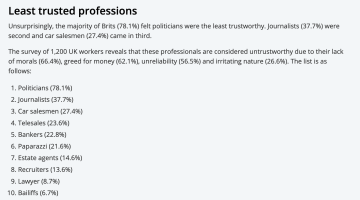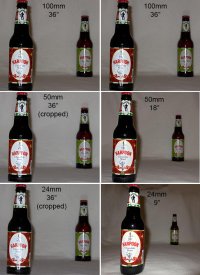Neuro, I've been an occasional observer of your interactions with forum members (including Unfocused), for some time. I largely agree (to the limits of my technical and practical understanding) with a lot of what you are saying. Part of the reason I'm here is to learn - and I tend to want detail and precision. I think a lot of the issue comes down to the tone of what you're saying.
I think it's over the top to describe (as an example from your last post) Unfocused as making deliberate 'false statements and misinformation'. Your view is that what he is saying is wrong (and that you've already refuted it factually) and yet he keeps repeating / defending it - but I don't think Unfocused is deliberately trying to misinform people. He's putting a view which is much less technically focused than what you are (eg on the fraught Equivalence issue). Yes, there are technical definitions for some of these terms and concepts. And I'm interested in them in that context. But many of us in the Forum have more limited focus, and are (at least sometimes) using technical terms in a more vernacular sense. I think it's over the top to use pejorative language (and tone) in reply to these types of comments. I'm not saying that shouldn't be done to a particular class of participant who is here deliberately to spread misinformation. But there are (in my view) pretty clear delineations between that type of poster and a longterm contributor like Unfocused.
I really want to keep as many people as possible contributing regularly to the forum. And I think if the 'heat' of replies can be turned down, it will make it a more pleasant place for everyone. If the same technical disagreements arise - is an answer to simply include a link back to summaries (and there have been detailed ones posted) in the past? And then move on?
I know this is all sounding awfully like 'can't we all play nicely and get along', and I apologise for that - but tolerance and forbearance from all sides would be appreciated.
I think it's over the top to describe (as an example from your last post) Unfocused as making deliberate 'false statements and misinformation'. Your view is that what he is saying is wrong (and that you've already refuted it factually) and yet he keeps repeating / defending it - but I don't think Unfocused is deliberately trying to misinform people. He's putting a view which is much less technically focused than what you are (eg on the fraught Equivalence issue). Yes, there are technical definitions for some of these terms and concepts. And I'm interested in them in that context. But many of us in the Forum have more limited focus, and are (at least sometimes) using technical terms in a more vernacular sense. I think it's over the top to use pejorative language (and tone) in reply to these types of comments. I'm not saying that shouldn't be done to a particular class of participant who is here deliberately to spread misinformation. But there are (in my view) pretty clear delineations between that type of poster and a longterm contributor like Unfocused.
I really want to keep as many people as possible contributing regularly to the forum. And I think if the 'heat' of replies can be turned down, it will make it a more pleasant place for everyone. If the same technical disagreements arise - is an answer to simply include a link back to summaries (and there have been detailed ones posted) in the past? And then move on?
I know this is all sounding awfully like 'can't we all play nicely and get along', and I apologise for that - but tolerance and forbearance from all sides would be appreciated.
Upvote
0




